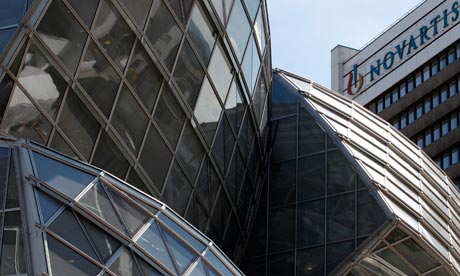How a future Prime Minister of Britain warmed to the godman with an Indian diplomat playing the reluctant translator
India House is among the better known diplomatic establishments in London. I first set eyes on the imposing building in 1952, when I was a student at Cambridge University. Thirty years later I entered India House as Deputy High Commissioner. One of my less attractive duties was to meet the unreasonable demands of visitors from India. Not all were disagreeable but many were.
Early in the summer of 1975, Mr. Chandraswamy telephones me. He was in London. The late Yashpal Kapoor had asked him to contact me, Chandraswamy invited me to meet me at his place. I said if he wished to see me, he should come to India House. This he did the next day. At the time he was in his late twenties. He was in his “Sadhu” attire. He did not speak a word of English. Now he does.
At this, our first meeting, he dropped names. After a few days he again come to see me. He invited my wife and me to have dinner with him.
The food was delicious. After dinner he said to us, “I will show you something you have never seen”. He then produced a large sheet of white paper and drew lines from top to bottom and left to right. Next he produced three strips of paper asked my wife to write a question on each strip, make a ball and place each one on a square on the chess board. My wife wrote the questions in English. He closed his eyes and went into a trance. I was, by this time getting restless. Suddenly he asked my wife to pick up any of the paper balls. She did so. Opened it. Chandraswamy then told her what the question was. He was spot on. My wife, who is an amateur astrologer, was sceptical at this stage. When Chandraswamy got the next two questions right, she was amazed and interested. I was intrigued. I could not, as a rationalist, accept mumbo-jumbo. Neither could I dismiss Chandraswamy as a complete hoax.
A few days later Y.B. Chavan, the then External Affairs Minister was on his way to the United States. I went to meet him at London’s Heathrow airport. He confirmed he knew Chandraswamy well. I also told Chavan that Chandraswamy had asked me to arrange a meeting with Lord Mountbatten and also with Mrs Thatcher. Should I arrange these meetings? To my discomfiture and surprise, Chavan sahib saw no harm in Chandraswamy meeting Lord Mountbatten or Mrs Thatcher.
I rang up Lord Mountbatten. He said he would have been glad to meet “your friend”, but he was leaving for a holiday in Northern Ireland the next day. I was quite relieved. I informed Chandraswamy. What about Mrs Thatcher?
She had been elected leader of the Conservative Party six months earlier. Doubts still assailed me about Chandraswamy meeting Margaret Thatcher, not yet the iron lady. Suppose Chandraswamy made an ass of himself. I would look a bigger ass. I sought an appointment with the Leader of the Opposition. She promptly obliged. I met her in her tiny office in the House of Commons.
Her response was, “If you think I should meet him, I shall. What does he want to see me for?” “That he will tell you himself,” I said. She agreed to see him in her House of Commons office early the next week. “Only ten minutes, Deputy High Commissioner,” she announced. I thanked her and left.
Chandraswamy was on cloud nine when I gave him the news. I cautioned him not to do or say something silly. I was putting my neck on the line for him. “Chinta mut kareay, (don’t worry”) said the sage. So, to the House of Commons the two of us proceeded. Chandraswamy was dressed in his “sadhu” kit, with a huge tilak on his forehead and a staff in his right hand. Rudraksha malas round his neck. He banged the staff on the road till I told him to stop doing so. I confess, I was feeling self conscious. Not Chandraswamy. He relished the attention he was inviting. Finally we reached Mrs Thatcher’s office. With her was her Parliamentary Private Secretary, Adam Butler, M.P. son of Rab Butler, the Conservative leader.
Introductions over, Mrs Thatcher asked, “What did you want to see me for?” Chandraswamy spoke in Hindi. I translated. “Tell her she will soon find out.” His tone was arrogantly respectful. Mrs Thatcher — “I am waiting.” The clock was ticking away. Chandraswamy was in no hurry. He asked for a large piece of paper. Went through the same routine as with my wife. He gave Mrs. Thatcher five strips of paper and requested her to write a question on each. She obliged, but with scarcely camouflaged irritation. Chandraswamy asked her to open the first paper ball. She did. He gave the text of the question in Hindi. I translated. Correct. I watched Mrs Thatcher. The irritation gave way to curiosity. Next question. Again bull’s eye. Curiosity replaced by interest. By the fourth question the future iron lady’s demeanour changed. She began to look at Chandraswamy not as a fraud, but as a holy man indeed. My body language too altered. Last question. No problem. I heaved a sigh of relief. Mrs Thatcher was now perched on the edge of the sofa. Like Oliver Twist, she asked for more. Chandraswamy was like a triumphant Guru. He took off his chappals and sat on the sofa in the lotus pose. I was appalled. Mrs Thatcher seemed to approve. She asked supplementary questions. In each case Chandraswamy’s response almost overwhelmed the future Prime Minister. She was on the verge of another supplementary, when Chandraswamy regally announced that the sun had set. No more questions. Mrs Thatcher was not put out. She enquired if she could meet him again. I was entirely unprepared for this. Very coolly, almost condescendingly he said, “On Tuesday at 2.30 p.m. at the house of Shri Natwar Singh.” I told him that he was over reaching himself by dictating the day and time without taking into account her convenience. This was not India. He was unmoved “Kunwar sahib, Anuvad kar dijiye aur phir dekhiye.” Please translate and then see. I was astounded when she asked me, “Deputy High Commissioner, where do you live?” This was not all. What followed was something out of a weird novel. Just as we were about to leave, Mr. Holy Man produced a talisman tied to a not so tidy piece of string. He then pronounced that Mrs Thatcher should tie it on her left arm when she came to my house on Tuesday. I was now on the verge of losing my temper. I said I would not translate this dehati rubbish. Mrs Thatcher intervened to know what the holy man was saying. “Mrs Thatcher, please forgive me, but Chandraswamy would like you to wear this talisman on your left arm.” She took the talisman. We were saying our goodbyes, when Chandraswamy produced his sartorial bomb. Turning to me he said “Kunwar Sahib, kindly tell Mrs Thatcher that on Tuesday she should wear a red poshak. I felt like hitting him. He was overdoing this. I firmly told him it was the height of bad manners to tell a lady what she should or should not wear. Mrs Thatcher looked a bit apprehensive at this not so mild altercation between a distraught Deputy High Commissioner and a somewhat ill-mannered holy man. Very reluctantly I said to her that the holy man would be obliged if she wore a red dress on Tuesday. I was looking down at the floor as I said this.
On Tuesday, at 2.30, Mrs Margaret Thatcher, leader of the Conservative Party, arrived at Sun House, Frognal Way, Hampstead. It was a beautiful day. She was wearing a stunning red dress. The talisman too was in its proper place.
She asked many questions but the most important related to the chances of her becoming Prime Minister. My wife was also present. Chandraswamy did not disappoint Mrs Thatcher. He prophesied that she would be Prime Minister for nine, eleven or thirteen years. Mrs Thatcher, no doubt believed that she would be Prime Minister one day. Nine, eleven, thirteen years was a bit much. Mrs Thatcher put one final question. When would she become a Prime Minister? Chandraswamy announced — in three or four years. He was proved right. She was PM for eleven years.
This narrative should have ended here. But there was an aftermath. The Commonwealth Summit was held in Lusaka, Zambia in 1979. Mrs Margaret Thatcher had by then become Prime Minister. I had been posted to Zambia in August 1977. Along with other High Commissioners I went to Lusaka airport to receive Mrs Thatcher. When she greeted me and my wife, I gently whispered “Our man proved right.” For a moment she looked flustered. She took me aside, “High Commissioner, we don’t talk about these matters.” “Of course not, prime minister, of course not,” said I.
(Extracted from K. Natwar Singh’s new book “Walking with Lions — Tales from a Diplomatic Past,”HarperCollins)







